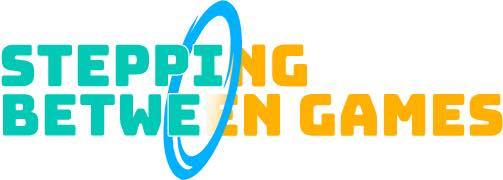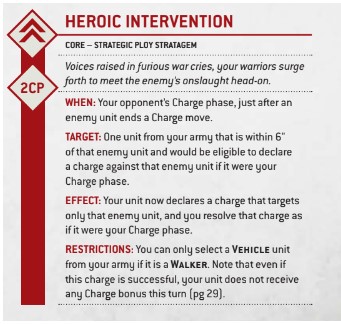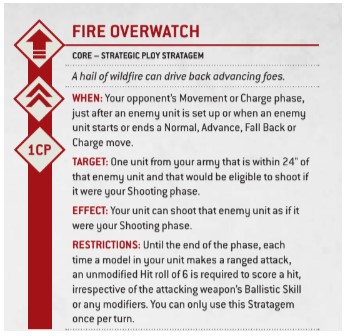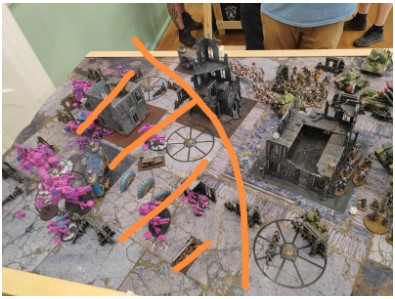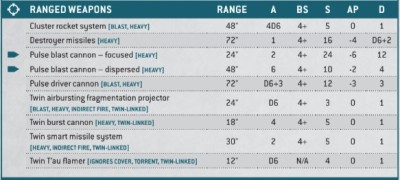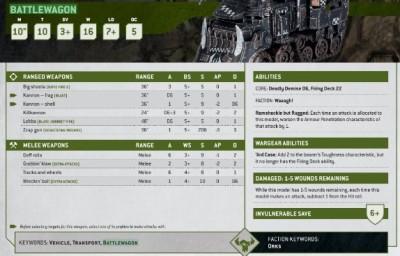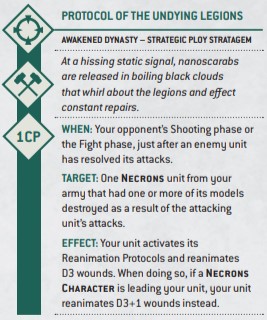We have Tom Paints Stuff back with a piece on the start of 10th.
The inimitable Thousandeyes asked me casually for my take on 10th edition 40k. I’ve had the chance to play about seven games now since the rules and points dropped, and like all good gamers this is more than enough time for me to have OPINIONS.
So here we go, my hot takes after a half dozen games of 10th edition:
Less Strats = More fun.
Oh boy, this is a big one.
In 9th edition an Ultramarine army had 41 stratagems to pick from. That was including the handful in the core rulebook, and their bloated codex. Now they have 17, 11 of which are common to all armies.
Since stratagems launched back in 8th they’ve been 40ks marmite. Some players loved their nuance and the resource management, others hated the vast bloat of them, and the endless flicking back and forth. By reducing the sheer number of them, generally toning them all down, and making them incorporate some features that had previously been core rules, GW have succeeded in, at least partially, slaying the stratagem dragon and making them much less oppressive.
Some of them are really great moves, for example, moving heroic intervention into a stratagem massively reduces the herohammer danger of a 3” bubble around each character.
Notice the 2cp cost, when folks do not start with a pool of CP, and only generate 1 per turn. Note, also, that it ONLY triggers against a unit that ends a charge move within 6” of on of your characters, so less gotcha moments. (I remember the first time I learned this lesson, a poor wandering Eldar Warlock mistakenly ended a move within 3” of a character knight. Squish.)
By avoiding the scenario where every unit in your codex had its own niche stratagem, making them consequential, and rationing CP, GW have given us what seems a robust and streamlined system.
Now, let’s talk about the Warhound Titan in the room.
Do I love this? No. Do I think it’s interesting? Yes.
This Stratagem is ALMOST great. It forces you to make really careful plays in your movement phase, and that helps make it less non-interactive for your opponent. Anyone who knows me knows I much prefer alternating activation games, so the dead time of 40k drags for me, and this does help to change that. It also makes it matter what order you move things in, and that increases the strategic thinking needed, this is also a great thing.
So why do I not love it? Oh boy.
In my most recent game I ran my tau and took a Stormsurge for giggles*. Hopefully you can already see where this is going. 24” from my Stormsurge looked like this.
This mean that if my opponent wanted to move ANYTHING into my side of the table I could trigger overwatch for 1CP from that Stormsurge.
The Stormsurge has a lot of guns.
This meant every turn I was rolling an average of 28 overwatch shots. Granted they only hit on 6 (rerolling 1s thanks to the wonderful Shadowsun) but it got boring for my opponent really quickly as I ground units down under weight of shots.
GW can fix this, probably by reducing the range of the strat, but for now, yeah, that exists.
Less deadly
I am not just including Necrons in this (for more on that see later), in general this edition feels much less deadly. For the first time in a couple of editions it feels like reasonably large vehicles can actually survive on the table. So let’s talk about why that is, using my favourite vehicle in the game, the good old Battlewagon:
In 9th with T7, 3+ save, 16 wounds, and damage reduction on weapons of S7 or below, the Battlewagon was likely to fall over pretty quickly, especially to some of the high AP killy weapons. With a Krak missile coming in at S8 AP2, that Battlewagon was going to find itself suffering pretty fast.
Now look at this beauty. It’s majestic.
Now a 10th edition Krak missile coming in at S9 AP 2 is going to wound it on 5+, and only have an effective AP of 1.
Yeah, baby.
The drop in AP is really noticeable. In my game of tau against Guard my Riptides (2+4++) hardly ever used their invulnerable save, only needing it for the occasional multimelta.
More big vehicles is good. Big vehicles lasting longer is good. Unless you’re fighting Knights, for more on that see later.
Morale matters
Ok, let’s get the first thing out of the way, for everyone who hates on Age of Sigmar, yes it’s called “battleshock.” I know, I know, first it was the command phase, now it’s battleshock, we’ll be rolling for turn priority any day now.
But battleshock is great. Totally different to all prior versions of morale, but great. Especially things that cause battleshock by methods other than casualties.
For example, in a recent game where my Necrons took on some Deathguard I found myself with 10 immortals trying to hold on to an objective. The clever DG player stacked his shooting into them to that his Plague Burst Crawler shot at them first.
This forced my Immortals to take a Battle-shock test.
So obviously this looks like it would remove my immortal’s ability to hold the objective, but no, because they become un-battleshocked during my command phase, in time to score points by controlling the objectives at the end of the command phase. So why is he doing it?
Because Necrons love this strat. As a Necron player I love this strat so hard it should probably not be allowed.
Stacked with a reanimator nearby every time I triggered this 1CP strat I put 2d3 Immortals back into the unit. So, by going for a battleshock each turn he was potentially shutting down my ability to target the unit with the strat. Since both the PBC weapon ability and my strat trigger at the same time, he (as the active player) could order these abilities to force me to take the battleshock test before I could target them with my strat.
Index does not equal balance
Let’s be honest, none of us thought it would. Especially if you played through the 8th edition index experiment. But there was some glaring issues. Thousand Sons are ridiculous, seriously go read their index. Eldar are still tasty, and likely to be oppressive. Reducing the punch of weapons, while greatly increasing the toughness of vehicles, means Knights are TERRIFYING (and their big boys have objective control 10, which is nothing to sniff at.)
Even my Necrons have, what I hope is unintentional, ludicrous shenanigans. In that game against the Deathguard my block of 20 warriors** had a 5+ FNP, then they reanimated 3d3 warriors every time reanimation protocols were triggered. How often could it be triggered, funny you should ask:
- At the end of my command phase.
- At the end of my OPPONENT’S command phase.
- After being attacked, using the strat above, for free.
- And ANOTHER time after being attacked.
I really hope that is not what GW had in mind when they wrote the index.
At the other end of the spectrum, some armies look pretty miserable, the most obvious example being the poor poor Deathguard. Seriously, DG with no form of resilience ability.
What are the two things you think of with Nurgle’s favourite Space Marines? They’re slow and they’re impossible to kill.
GW managed one of those things, they’re definitely slow.
Still, for all it’s flaws, 10th edition is a breath of fresh air. I’ve enjoyed every game of it so far, and I can’t wait to see what it does to the tournament scene.
*And because the TOWERING keyword is amazing, solving most of the LOS issues for big models. Seriously, if you’ve not seen it look it up in the terrain rules.
** 20 Warriors with a Technomancer and an Overlord in the unit.
In range of an objective.
Within 12” of a Canoptek Reanimator.
Within 3” of a Ghost Ark.
